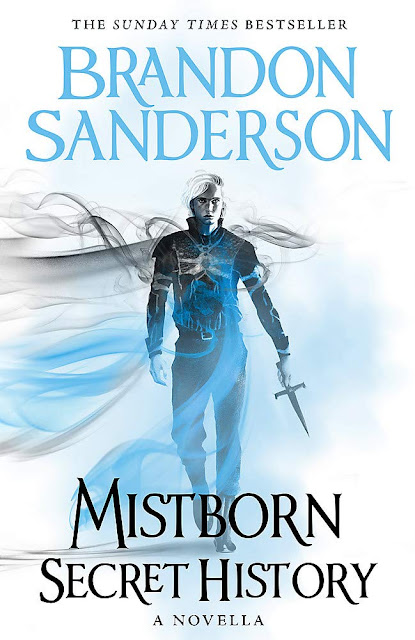Harrow the Ninth
I found this second book of
The Locked Tomb Trilogy rather tiresome.
Yes, I know. I absolutely
adored Gideon the Ninth. It touched a
nerve, deep inside my darkened soul. What’s more, I’m usually spot-on when it
comes to choosing reading material and the kind of saga I think I’ll enjoy.
Alas, I failed in this regard. Though – I’m glad to say – my faith in Tamsyn
Muir was restored as the story drew toward its climax.
Here’s the blurb to start you
off, and then I’ll explain what I think was a major flaw that sucked all the
joy out of this particular book.
*********
She answered the Emperor's call.
She arrived with her arts, her
wits, and her only friend.
In victory, her world has turned
to ash.
After rocking the cosmos with her
deathly debut, Tamsyn Muir continues the story of the penumbral Ninth House
in Harrow the Ninth, a mind-twisting puzzle box of mystery, murder,
magic, and mayhem. Nothing is as it seems in the halls of the Emperor, and the
fate of the galaxy rests on one woman's shoulders.
Harrowhark Nonagesimus, last
necromancer of the Ninth House, has been drafted by her Emperor to fight an
unwinnable war. Side-by-side with a detested rival, Harrow must perfect her
skills and become an angel of undeath -- but her health is failing, her sword
makes her nauseous, and even her mind is threatening to betray her.
Sealed in the gothic gloom of the
Emperor's Mithraeum with three unfriendly teachers, hunted by the mad ghost of
a murdered planet, Harrow must confront two unwelcome questions: is somebody
trying to kill her? And if they succeeded, would the universe be better off?
*********
Sounds epic, doesn’t it?
And to be fair, it is . . .
after a fashion.
As before, we have all the elements of Dark
City, the Necromongers from The
Chronicles of Riddick and the evocative imagery of the Bene Gesserit nuns
in Dune, blended into a ‘whodunnit”
style murder/killer-on-the-loose/mystery to fathom out. And yes, as before,
it’s interspersed with clever dialogue, untrustworthy characters with their own
agendas, a brutal magic system, and plenty of action that keeps you guessing .
. . And more importantly: who is it that seeks Harrowhark’s death?
Buuuuut. . .
In my honest, heartfelt
opinion, it still falls flat. And the main reason for that is the amount of
time/perspective/and literal head hopping spent flitting backward, forward –
and sometimes – sideways, in between an imaginative and appealing opening, and the
Hail-Mary redeemer of an ending that saves the day by lifting the story arc – at
last – to a level that matches the pedigree of Gideon the Ninth.
And the reason for that is
Gideon Nav.
Fans of Gideon the Ninth know
all about Gideon Nav. A sassy, smart/foul-mouthed, hooligan with a sword the
size of her ego. But, my oh my, she made battling foul necromantic monsters and
backstabbing opponents to the death lots of fun!
SPOILER ALERT:
And yet we hardly get to see
her? A surprise, as fans will also know that once a necromancer and sword
wielding cavalier have blended to rise to Lyctorhood, they become near all-powerful immortal servants
of the everlasting resurrection, nigh on impossible to kill.
Yet
amazingly, Gideon is missing from most of the story.
END OF
SPOILER ALERT:
So, okay.
There IS a reason for that. And it took me until about halfway through the
story to guess why that might be. (Slow, for me, as I’m usually sharp as the
proverbial nail in working out the plot). But THAT was due to all the time/perspective/head hopping I mentioned. It’s
distracting. And far from enhancing the mystery element, it stymies it
completely.
Now, don’t get me wrong. This
kind of thing doesn’t usually bother me. I’ve seen it employed in other stories
by a variety of writers. Yet they managed it in a cohesive way that allows you
to maintain a proper grasp of the storyline. And it’s here that Tamsyn Muir
falls short. The temporal skipping is haphazard in that it often comes so
unexpectedly that it takes a while for you to appreciate you’ve left the main
story thread. So it becomes irritating. And that’s a mistake, as far as I’m
concerned, as it spoils what could be – and does its best to be – an awesome
sequel.
Now, this is
only my opinion. As I mentioned at the outset, the story is saved by a much
more consistent beginning and spectacular ending. But in between? All I can say
is that I do read and review a lot of different books by a wide variety of
authors. And when something I enjoyed immensely first time out is unnecessarily
tainted by an avoidable trait? THAT vexes me.
I’m still a
huge fan of the Locked Tomb trilogy, and hope Tamsyn Muir’s concluding chapter
returns to the original format. Something I look forward to very much.







